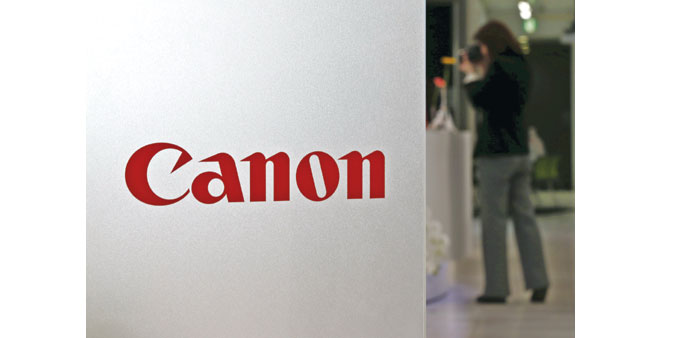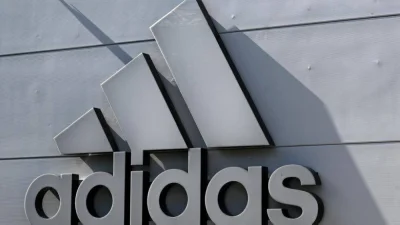Japan’s Canon Inc reported first-quarter net profit that fell by almost a third yesterday, grossly undershooting expectations, citing a collapse in demand for compact digital cameras. Profit at the world’s largest camera maker fell to ¥33.93bn ($285.27mn) in January-March, compared with the ¥53.64bn average estimate of 5 analysts according to Thomson Reuters data. The result comes as the world’s No. 1 camera maker contends with a shift in consumer preference toward increasingly capable smartphone cameras. That shift has dragged Canon’s compact sales down nearly 70% since the market’s peak in 2008 – the year after Apple released its game-changing iPhone. “Sales volume for low-end (digital camera) models declined due to the ongoing contraction of the market in all regions from the previous year,” said Canon in its earnings release. It did not specify first-quarter compact sales, but lowered its 2015 forecast to 7.0mn cameras from 7.8mn, or 23% less than 2014. It projected sales of higher-end cameras with interchangeable lenses at 5.8mn rather than 6.4mn, representing a 9.4% on-year decline. Canon also said, without elaborating, that first-quarter net profit was brought down by an increase in its effective tax rate as well as a euro which fell 11% against the yen.
Bankia
Spain’s state-rescued lender Bankia posted a forecast-beating 12.8% rise in first-quarter net profit to €244mn ($265.25mn) yesterday, though low interest rates weighed on the bank’s performance. Net interest income, the difference between what a bank makes on loans and what it pays out on deposits, came in at €693mn, down 0.6% and missing a €701mn forecast in a Reuters poll of analysts.
The bank, once a symbol of Spain’s financial crisis after receiving a €22bn bailout, is seeking strong growth this year and last week approved payment of the first dividend in its short but troubled history.
Bankia is targeting group profit of about €1.2bn in 2015, against €747mn last year, when the bank set aside €312mn to cover compensation claims from investors who bought into its ill-fated 2011 flotation.
The lender, which is still grappling with the fallout from the listing, aims to increase lending to small businesses by 10% this year, looking a return on equity (ROE) profitability ratio of at least 10%.
Its ROE ratio was 8.7% at the end of March, up from 8.6% three months earlier. Lending was slightly down in the quarter as the bank continued to reduce its exposure to the real estate sector, though lending to companies and consumers increased.
Progress was made on bad debt, a key concern for the bank in the past. Its bad loan ratio dropped to 12.6% at the end of March from 12.9% at December 31, while its core capital ratio under full Basel III criteria rose to 11.01% from 10.6% at the end of the previous quarter.
Galp
Portugal’s Galp Energia said adjusted first-quarter net profit more than doubled from a year earlier, in line with expectations, thanks to a sharp increase in refining margins and higher oil output.
Galp had a net profit of €121mn ($132mn) in the quarter, up from €47mn a year earlier. Earnings before interest, taxes, depreciation and amortization (EBITDA) rose 50% to €398mn. The results are adjusted to reflect changes in the company’s stocks of crude. Analysts polled by Reuters had forecast, on average, an adjusted net profit of €122mn and EBITDA of €376mn.
The benchmark Brent crude price fell in January to its lowest since 2009, helping lift refining margins in Europe.
Galp’s refining margin soared to $5.9 per barrel in the period from just $0.9 a year earlier. Galp, which owns both Portugal’s refineries, remains heavily reliant on that side of its business despite having expanded in crude production with projects in Brazil and Africa. Galp said its oil output soared almost 43% to 38,400 barrels per day in the quarter and it refined 34% more oil and gas. Still, higher output only offset part of the impact of low world oil prices as EBITDA at its exploration and production division fell almost 10% to €94mn.
PDVSA
Venezuelan state oil company PDVSA’s earnings fell 4.3% in 2014, it said yesterday, reporting drops in production and exports after a year of economic upheaval and sliding crude prices. PDVSA, which dominates the oil industry in the country estimated to have the world’s largest crude reserves, registered earnings of $128.4bn last year, down from $134.3bn the year before, it reported on its website. Production meanwhile fell four%, to 2.78mn barrels per day, and exports 2.8%, to 2.35mn barrels a day, it said. Venezuela is struggling with a prolonged recession and chronic shortages of the panoply of basic goods it relies on oil money to import, from food to medicine to toilet paper.
President Nicolas Maduro’s government is struggling to come up with badly needed cash in the face of a global supply glut that caused oil prices to collapse by more than 50% between June and January. Oil exports provide 96% of Venezuela’s foreign currency.
PetroChina
Chinese oil giant Petrochina’s first-quarter net profit dived 82%, largely due to the sharp in oil prices since the same period last year. The company said its operating results had come in as expected amid “volatile oil prices,” and said it had reduced costs during the quarter. The company, which now vies with Exxon Mobil for the title of the world’s largest oil company by market value, said its first-quarter net profit after deducting nonrecurring items dropped to 6.2bn yuan (about $997.2mn) from CNY34.8bn a year before.
DBS Group
DBS Group Holdings yesterday said its first quarter net profit rose 10% on year on an improvement in its interest income and margins. Net profit in the January-to-March quarter was 1.13bn Singapore dollars (US$851mn), compared with S$1.03bn in the same quarter of last year. DBS said in a statement to Singapore Exchange that the net profit was its highest ever. The bank’s net interest income grew 14% on year in the first quarter to S$1.69bn while the net interest margin improved to 1.69% from 1.66% last year. Total income, which includes fees, commissions and other income not derived from interest, was up 12% on year to S$2.74bn. Non-performing loans ratio, or bad assets, was 0.9% in the first quarter of this year, compared with 1% last year, said the biggest bank in Southeast Asia by assets. The bank’s total assets grew 9% on year in the first quarter to S$456.65bn, while customer loans were up 11% to S$280.81bn, it said.



